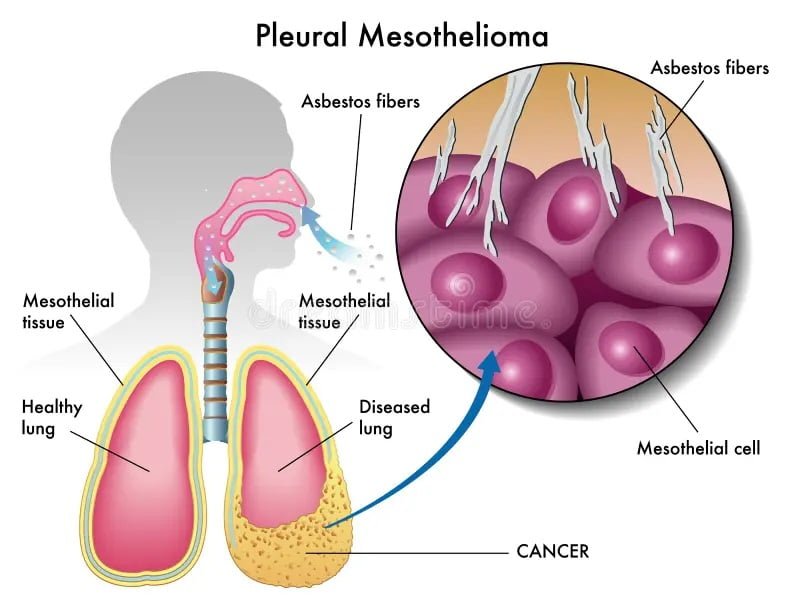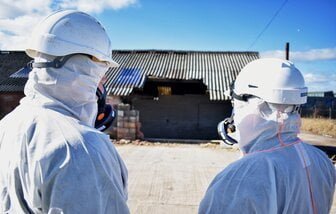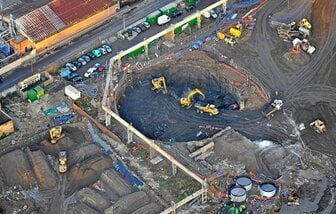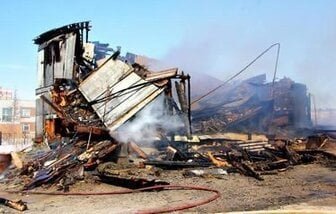Why Asbestos is Dangerous
Learn about the dangers of asbestos, its health risks including mesothelioma and lung cancer, and how to protect yourself from exposure. Understand the regulations and laws regarding asbestos, and find resources and support for asbestos-related issues. This comprehensive guide covers everything you need to know about asbestos safety and prevention.
Understanding the Dangers of Asbestos: Health Risks and Protection Tips
Asbestos is a group of naturally occurring fibrous minerals that were extensively used in various industries, primarily due to their durability, heat resistance, and insulating properties.
Historically, asbestos was a popular choice in construction materials such as roofing shingles, floor tiles, and insulation, as well as in manufacturing products like automotive brakes and clutches. Its widespread use can be attributed to the material’s versatility and cost-effectiveness.
However, the very properties that made asbestos so valuable also contribute to its potential dangers. The fibrous nature of asbestos allows its tiny fibers to become easily airborne when materials containing asbestos are disturbed.
These fibers are microscopic, often too small to be seen with the naked eye, which means they can be inhaled or ingested without immediate notice. Once inhaled or ingested, asbestos fibers can lodge themselves in the respiratory or digestive tracts, where they may remain for years without causing any apparent symptoms.
Over time, the presence of these fibers in the body can lead to severe health issues. The most well-known and serious conditions associated with asbestos exposure include asbestosis, a chronic lung disease characterized by scarring of lung tissue; mesothelioma, a rare and aggressive form of cancer affecting the lining of the lungs, abdomen, or heart; and lung cancer.
These diseases often have long latency periods, meaning symptoms might not appear until many years after the initial exposure. This latency period complicates early diagnosis and treatment, significantly impacting the prognosis for affected individuals.
The danger of asbestos lies not only in its potential to cause life-threatening diseases but also in the difficulty of detecting and removing it. Consequently, understanding the risks associated with asbestos and implementing appropriate protection measures is crucial for minimising exposure and safeguarding public health.

Asbestos, a group of naturally occurring fibrous minerals, poses significant health risks when its fibers are inhaled or ingested. Once these microscopic fibers enter the body, they can easily become lodged in the lung tissue or other organs. One of the critical issues with asbestos exposure is the body’s inability to expel these fibers effectively. The persistence of asbestos fibers within the body initiates a harmful inflammatory response.
When asbestos fibers are inhaled, they travel through the airways and reach the alveoli, the tiny air sacs in the lungs where oxygen exchange occurs. The body’s immune system attempts to remove these foreign particles by engulfing them with macrophages, a type of white blood cell. However, due to their durability and size, asbestos fibers often resist breakdown and remain embedded in the lung tissue. This ongoing presence triggers chronic inflammation and leads to the accumulation of scar tissue, a condition known as fibrosis.
The chronic inflammatory response and resultant scarring can give rise to several severe health conditions. One such condition is asbestosis, a chronic lung disease characterized by extensive lung tissue scarring that impairs respiratory function. Individuals with asbestosis may experience symptoms such as shortness of breath, persistent cough, and chest tightness.
Moreover, asbestos exposure is strongly linked to the development of lung cancer. The continuous irritation and inflammation caused by asbestos fibers can induce cellular changes and genetic mutations, escalating the risk of malignant tumor formation in the lung tissue. Smokers who have been exposed to asbestos fibers face an even higher risk of developing lung cancer.
Another devastating consequence of asbestos exposure is mesothelioma, a rare but aggressive cancer affecting the mesothelium, the protective lining covering many internal organs. Mesothelioma commonly originates in the pleura, the lining around the lungs, but can also occur in the abdomen or heart. The fibers cause cellular damage and mutations that eventually lead to cancerous growth.
The pathophysiological impact of asbestos is profound and multifaceted, underscoring the importance of recognizing and mitigating exposure to this hazardous material. Understanding these mechanisms is crucial for both healthcare professionals and the general public to prevent and manage asbestos-related diseases effectively.
Asbestos exposure has been linked to several fatal diseases, most notably mesothelioma and lung cancer. These conditions are particularly insidious due to their long latency periods, often spanning several decades. This delayed onset complicates early detection and treatment, leading to poor prognoses for many affected individuals.
Mesothelioma, a rare and aggressive cancer, primarily affects the lining of the lungs (pleura) but can also impact the abdomen, heart, and other organs. The disease’s symptoms, such as chest pain and shortness of breath, typically emerge many years after initial asbestos exposure. By the time mesothelioma is diagnosed, it is often in an advanced stage, leaving limited treatment options and resulting in a high mortality rate. The five-year survival rate for mesothelioma patients is less than 10%, underscoring the lethal nature of this asbestos-related disease.
Similarly, asbestos exposure significantly increases the risk of lung cancer. Unlike mesothelioma, lung cancer can develop more rapidly after exposure, though it still often manifests decades later. The presence of asbestos fibers in the lung tissue can cause genetic damage, leading to the development of malignant tumors. The prognosis for asbestos-induced lung cancer is also grim, with a five-year survival rate of approximately 18%, which decreases further if the cancer is diagnosed at a late stage.
Statistics highlight the severe impact of asbestos-related diseases. According to the World Health Organization, approximately 107,000 people die annually from asbestos-related lung cancer, mesothelioma, and asbestosis. Case studies further humanize these statistics, illustrating personal tragedies and the profound suffering experienced by patients and their families.
The prolonged latency period of asbestos-related diseases means that many individuals are unaware of their exposure until symptoms appear, often too late for effective intervention. Consequently, understanding the dangers of asbestos and implementing protective measures is crucial in reducing the mortality associated with these fatal illnesses.
Asbestos exposure poses significant health risks, making it crucial to understand how to protect yourself effectively. Identifying environments where asbestos might be present is the first step. Older buildings, particularly those constructed before the 1980s, are likely candidates, as asbestos was commonly used in insulation, roofing, and flooring materials. Additionally, certain industrial settings, such as shipyards, automotive repair shops, and construction sites, may harbor asbestos-containing materials.
When working in or around these environments, personal protective equipment (PPE) is indispensable. Wearing appropriate gear, including respiratory masks specifically designed to filter asbestos fibers, disposable coveralls, and gloves, can significantly reduce the risk of inhalation or skin contact. Moreover, ensuring proper ventilation in the workspace can help disperse any airborne asbestos particles, minimizing inhalation risk.
Adhering to safety regulations is another crucial aspect. Occupational Safety and Health Administration (OSHA) guidelines provide comprehensive standards for handling asbestos, including permissible exposure limits (PELs) and recommended work practices. Familiarizing yourself with these regulations and ensuring compliance is essential for maintaining a safe environment.
Professional asbestos inspections are vital when dealing with potential asbestos-containing materials. Certified inspectors can accurately identify and assess the presence of asbestos in buildings and materials. If asbestos is detected, it is imperative to engage professional asbestos abatement procedures. Removal or encapsulation should be performed by licensed abatement contractors who follow stringent safety protocols to prevent asbestos fibers from becoming airborne.
In summary, protecting yourself from asbestos exposure involves a combination of identifying at-risk environments, utilizing PPE, ensuring proper ventilation, adhering to safety regulations, and relying on professional inspections and abatement services. By adopting these measures, you can significantly mitigate the health risks associated with asbestos exposure.
If you suspect that you have been exposed to asbestos in the UK, it is crucial to take immediate and appropriate actions to safeguard your health. The first step is to seek professional medical advice. Visit your GP and inform them about the potential asbestos exposure. Your doctor may recommend health screenings such as chest X-rays and lung function tests to monitor any early signs of asbestos-related diseases.
The Health and Safety Executive (HSE) plays a pivotal role in regulating and managing asbestos safety in the UK. If you believe you have been exposed to asbestos at your workplace, it is essential to report this to the HSE. This can be done through their website or by contacting them directly. The HSE will investigate the circumstances of the exposure and ensure that the necessary measures are taken to prevent further risks.
Individuals who have been exposed to asbestos may be entitled to legal rights and compensation. If you develop an asbestos-related disease, you may be eligible to claim compensation through the Industrial Injuries Disablement Benefit (IIDB) or pursue a personal injury claim. Legal advice from a solicitor specializing in asbestos cases can provide guidance on the best course of action.
Support is also available from various organizations and groups dedicated to assisting individuals affected by asbestos exposure. The Asbestos Victims Support Groups Forum UK offers advice, support, and information on legal and medical issues. Mesothelioma UK provides specialized assistance for those diagnosed with mesothelioma, a type of cancer linked to asbestos exposure.
For further information and support, you can contact the following organizations:
- Health and Safety Executive (HSE): www.hse.gov.uk
- Asbestos Victims Support Groups Forum UK: www.asbestosforum.org.uk
- Mesothelioma UK: www.mesothelioma.uk.com
By following these steps and utilizing available resources, you can take proactive measures to address asbestos exposure and protect your health and legal rights.
Asbestos regulation has evolved considerably over the past century, reflecting increased awareness of its health hazards. Historically, asbestos was widely used in construction, shipbuilding, and other industries due to its durability and fire-resistant properties. However, as the dangers of asbestos exposure became apparent, regulatory frameworks were established to control and ultimately phase out its use.
In the UK, significant legislative milestones began with the Asbestos Industry Regulations 1931, which introduced measures to reduce dust in factories. This was followed by the Asbestos Regulations 1969, which broadened the scope to all work with asbestos, setting limits on airborne fibres. The Control of Asbestos at Work Regulations 1987 further tightened these controls, mandating risk assessments and requiring employers to prevent or reduce exposure.
Globally, the situation varied, with some countries taking early action while others lagged. The United States, for example, saw the Environmental Protection Agency (EPA) ban most asbestos-containing products in 1989, although parts of this ban were later overturned. The European Union moved towards a complete ban, culminating in the EU Asbestos Directive 1999/77/EC, which prohibited new uses of asbestos from January 2005.
Current UK regulations are encapsulated in the Control of Asbestos Regulations 2012, which consolidated previous rules and enforced stricter compliance requirements. These regulations mandate that businesses must carry out asbestos surveys, manage identified asbestos materials, and ensure proper training for employees. Failure to comply can result in substantial fines and legal action, emphasizing the importance of adherence to these laws.
Despite these measures, debates continue regarding the adequacy of current asbestos regulations. Advocates for stricter laws argue that existing regulations do not sufficiently protect individuals from low-level, long-term exposure. There is also ongoing discussion about how to manage asbestos in older buildings, with some calling for more aggressive removal programs.
Potential future changes in asbestos regulation may include enhanced monitoring and reporting requirements, stricter penalties for non-compliance, and more comprehensive public education campaigns. As scientific understanding of asbestos-related health risks continues to evolve, so too will the regulatory landscape, aiming to safeguard public health effectively.
Asbestos exposure has left an indelible mark on many individuals and communities, manifesting in severe health complications and diminished quality of life. Personal stories from those affected underscore the profound impact of asbestos-related diseases, such as mesothelioma, asbestosis, and lung cancer.
One poignant example is the case of John Smith, a former construction worker diagnosed with mesothelioma. John was unknowingly exposed to asbestos for decades while working on various building sites. His diagnosis came as a shock, and despite aggressive treatment, his health declined rapidly. John’s story is a stark reminder of the latent dangers of asbestos, illustrating the long latency period of asbestos-related diseases, which can span several decades.
A similar tale is that of Mary Johnson, an office worker in a building later found to contain asbestos insulation. Mary developed asbestosis, a chronic lung disease, years after her exposure. Her condition has led to a significant reduction in her lung function, necessitating ongoing medical care and impacting her everyday life. Mary’s experience highlights the risk of asbestos in non-industrial settings, proving that exposure is not limited to those in manual labor or construction.
On a larger scale, the industrial disaster at the Libby, Montana vermiculite mine stands as a grim testament to the hazards of asbestos. For years, residents and workers were exposed to asbestos-contaminated dust, leading to numerous cases of respiratory diseases and deaths. The contamination extended beyond the mine, affecting the entire community. Legal battles ensued, resulting in significant settlements and heightened regulatory scrutiny. This case illustrates the far-reaching consequences of asbestos exposure, affecting not just individuals but entire communities.
These case studies underscore the critical need for heightened awareness and stringent safety measures to prevent asbestos exposure. The personal and communal toll of asbestos-related diseases is a powerful call to action for better protective regulations and more comprehensive medical support for those affected.
For individuals affected by asbestos exposure, numerous resources are available to address both health and legal concerns. Medical professionals specializing in asbestos-related diseases, such as mesothelioma and asbestosis, can provide essential diagnostic and treatment services. Renowned institutions like the Mayo Clinic and Cleveland Clinic have dedicated departments for occupational lung diseases, offering comprehensive care and advanced treatment options.
Legal services are equally crucial for those seeking compensation for asbestos-related illnesses. Law firms specializing in asbestos litigation, such as Simmons Hanly Conroy and Weitz & Luxenberg, have extensive experience in handling such cases. These firms can guide affected individuals through the complexities of filing claims, ensuring they receive the compensation they deserve for medical expenses, lost wages, and other damages.
Support groups play a vital role in offering emotional and practical assistance to those impacted by asbestos exposure. Organizations like the Asbestos Disease Awareness Organization (ADAO) and the Mesothelioma Applied Research Foundation (MARF) provide platforms for patients and families to share their experiences, find support, and access valuable resources. These groups often host events, webinars, and meetings to foster a sense of community and mutual support.
Educational resources are essential for those seeking to understand asbestos exposure and its implications better. Websites such as the Occupational Safety and Health Administration (OSHA) and the Environmental Protection Agency (EPA) offer comprehensive information on asbestos safety regulations, exposure prevention, and health risks. Additionally, the National Cancer Institute (NCI) provides detailed guides on asbestos-related cancers, treatment options, and ongoing research.
Several organizations are actively involved in asbestos awareness and advocacy, working to improve safety standards and support affected individuals. The Asbestos Disease Awareness Organization (ADAO) is a leading nonprofit dedicated to preventing asbestos exposure through education and advocacy. Similarly, the International Ban Asbestos Secretariat (IBAS) campaigns globally to eliminate the use of asbestos and support victims.
By leveraging these resources, individuals affected by asbestos can find the medical care, legal assistance, and emotional support they need to navigate the challenges posed by asbestos exposure. Whether seeking information, treatment, or community support, these resources provide a comprehensive foundation for addressing asbestos-related issues.
Asbestos in Homes
Learn about the risks of asbestos, a hazardous material commonly found in homes. This guide covers the health dangers of asbestos exposure, including asbestosis, lung cancer, and mesothelioma, and provides essential information on proper handling, safety precautions, and professional asbestos removal to safeguard your health and home
What is a Asbestos Surveys
Learn about the different types of asbestos surveys conducted in the UK, including asbestos management surveys, asbestos refurbishment and demolition surveys, and asbestos reinspection surveys. Find out why these surveys are crucial for identifying and managing the presence of asbestos in buildings, and how they ensure the safety.
What is a Pre-Demolition Survey?
A pre-demolition survey is an essential step in any demolition project. By conducting a thorough assessment of the building or structure, potential hazards can be identified and appropriate measures can be taken to ensure a safe and efficient demolition
Refurbishment Survey
A refurbishment survey is a critical step in the refurbishment process in the UK. It helps to identify and manage the risks associated with asbestos-containing materials, ensuring the safety of workers and occupants. By engaging a qualified surveyor to conduct the survey, duty holders
Asbestos Removal
Total Asbestos is a leading asbestos removal company in the UK, offering comprehensive services including surveys, testing, and removal. With a focus on safety, regulatory compliance, and cutting-edge technology, they manage projects across residential, commercial, industrial, and public sectors.
Types of Asbestos
Asbestos has been included in many materials in the last 150 years. Three common types of asbestos can be found in buildings: Crocidolite (Blue Asbestos), Amosite (Brown Asbestos), Chrysotile (White Asbestos)
Managing Asbestos
The strategy of the HSE is to ensure that those involved in the repair, removal or disturbance of asbestos containing materials (ACMs), such as insulation coatings or insulation boards, are licensed & competent
What is Asbestos ?
Asbestos was commonly used as a construction material in the UK between the 1950s and 1980s in particular. If your home was built between these years, chances are that you are living with Asbestos
Control Of Asbestos Regulations 2012
The control of asbestos regulation 2012 came into force on 6 April 2012. In practice the changes are fairly limited. They mean that some types of non-licensed work with asbestos now have additional requirements, i.e. notification of work, medical surveillance and record keeping.
Asbestos In The Workplace
Learn about asbestos, its types, and the health risks associated with exposure. Understand the importance of managing asbestos in the workplace, the UK’s Control of Asbestos Regulations 2012, and the role of the Health and Safety Executive (HSE) in enforcing these regulations. Discover the safety measures necessary to protect workers
Brownfield Land Remediation Contractors
We have tackled some of the most complex remediation projects undertaken in the United Kingdom, surpassing industry standards. Our diverse range of experience and expertise sets us apart and we continually deliver to the highest standards
Total Asbestos Consultancy
Total Asbestos stands as a premier provider of comprehensive asbestos consultancy services across the UK. Renowned for their expertise and unwavering commitment to safety, Total Asbestos offers a wide array of services designed to address the multifaceted challenges posed by asbestos.
Let's Work Together
Please complete the form below and someone from the Total team will be in touch to discuss your asbestos requirements For urgent needs, our customer support team is available through various channels. You can reach us via phone during business hours, or through our dedicated email support. We are committed to providing timely assistance and ensuring your asbestos concerns are addressed promptly and professionally.












